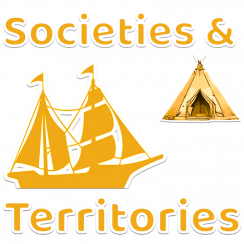In the early days of the colony, people lived almost exclusively off the fur trade. Jean Talon thought it would be a good idea to start small businesses to exploit the colony‘s other natural resources so that it would be less dependent on France. But it was Gilles Hocquart who came up with the idea of creating heavy industries.
Creating new industries takes a lot of money, however. So Hocquart turned to the king, who agreed to provide these funds. Giving money to someone else to start an industry is called subsidizing. The king subsidized two major companies in New France, a logging company and an iron company.
Exploiting the colony’s forests to make wood boards was by no means a new idea, and small mills quickly started to appear all over the St. Lawrence Valley. Since transportation was very expensive, Hocquart proposed that the colony get involved in shipbuilding in Québec. The idea was a success and four large ships between 500 to 700 tons each were built. These ships bore very Canadian names like The Caribou, The Beaver and the Moose. There was certainly no lack of wood in New France. All that was needed to build ships were artisans from France; transporting them to the colony was much less expensive.
New France had not only wood, but iron, too. When the king granted permission to operate an iron ore deposit, the Saint-Maurice forge was created in Trois-Rivières in 1730. The forge made heating stoves, nails, cannonballs, cannons, kettles, axes and many other items. Basically, anything made of iron.
Getting iron items this way was a lot easier than having to wait for them to arrive from France by boat.
Author: Service national du Récit de l’univers social
Video narration available in French at http://primaire.recitus.qc.ca/sujets/7/agriculture-commerce-et-industrie/175
See also – Traces of the past:




